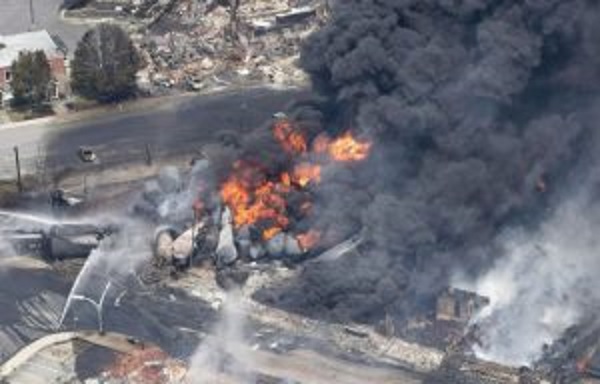Train Derailment – Focus on the WHY and not the WHO
July 5, 2013 – Tom Harding, the lead engineer and sole crew member of a 70+-car train operated by Montreal Maine and Atlantic Railway (MMA) parked the train on a hill a few miles above the town of Lac Mégantic, Quebec, Canada. The lead engine was experiencing mechanical problems and Tom was instructed by headquarters to set the air brakes on the lead locomotive (he left it running to keep air pressure supplied to the air brakes) and applied seven hand brakes. He left the train and checked into a local motel – he was going to deal with the mechanical issues in the morning.
The train was carrying tanker-cars of highly combustible crude oil. Around midnight the lead locomotive caught fire due to multiple oil leaks. The fire department put out the fire and shut down the lead locomotive to prevent more oil from leaking.
With the locomotive shut down, the airbrake slowly began to lose pressure and the train started rolling down the hill towards the town – picking up speed along the 7.2 miles to Lac Mégantic. When the unmanned train hit a curve (at a speed of 65 mph/104 kmh) it derailed and almost 6 million liters (158,000 gallons) of crude oil spilled, ignited and exploded sending fireballs towards the city center, flames 200 feet high, and contaminating the area with spilled oil. Tragically, the fire killed 47 people and destroyed much of the town’s historic downtown.
Tom Harding, and two other railroad employees were arrested and accused of being responsible for the disaster. They were ultimately found not guilty.
It became evident the true (root) causes of the incident were multiple failures by management including inadequate training, lack of internal safety auditing system, taking short-cuts to save money, by-passing safety and maintenance protocols, and other deficiencies. The Transportation Safety Board of Canada’s (TSB) investigation also uncovered weak oversight of MMA by the railroad’s regulatory body, TC Canada and TC Quebec.
Here are the TSB findings for the 18 contributing factors that lead to the accident.
The point of this Fatality File is to highlight how easy it is to focus on WHO to blame for an incident and not focus on the WHY. These three workers faced life in prison if they were convicted – and yet, the lead engineer was doing what he had been instructed to do and with the limited amount of knowledge he had.
When we focus on blame and not on uncovering the root causes of an incident we risk wrongly placing the blame and we miss the chance to prevent future events from happening.
Click the links further analysis and findings and the jury’s decision.

